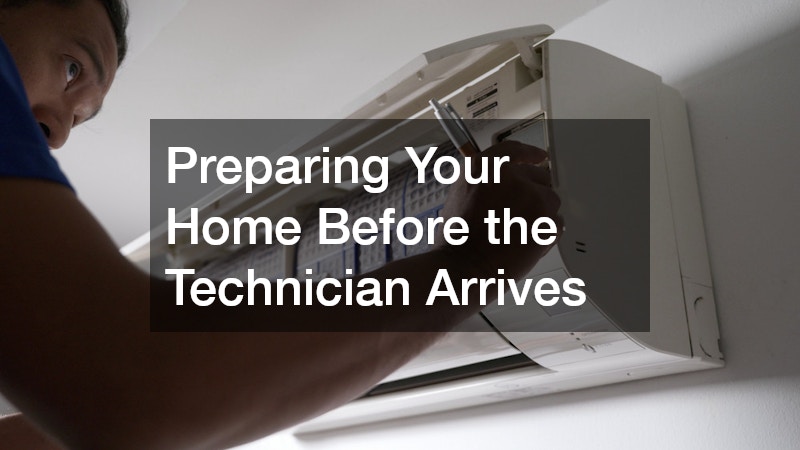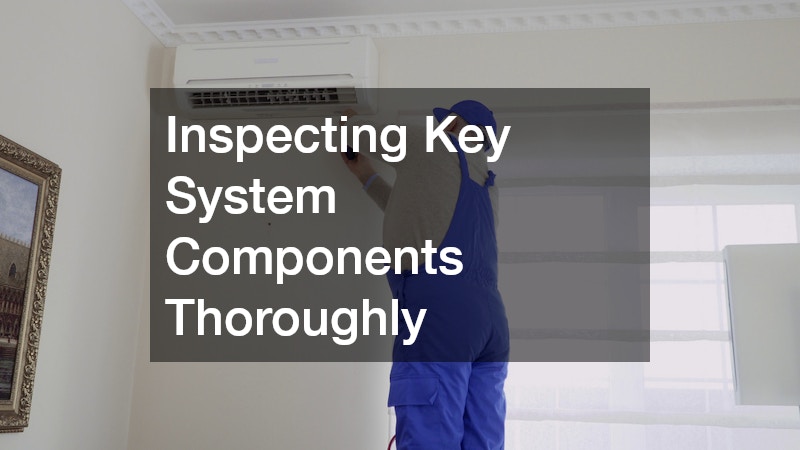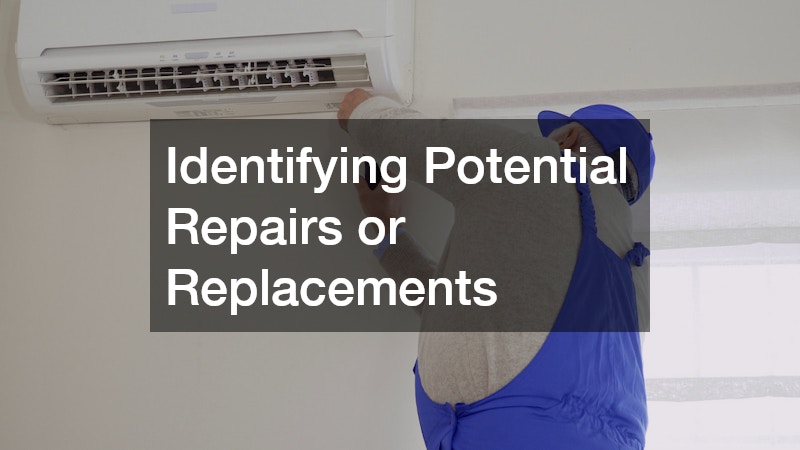A properly functioning HVAC system plays a critical role in keeping your home comfortable year-round, but even the best systems can develop issues over time. When something goes wrong, it can be difficult to know exactly what the problem is without professional help. That’s where a free HVAC diagnostic can make a big difference. This type of service allows a trained technician to evaluate your system, identify potential problems, and recommend the right solutions without an upfront fee. It’s an opportunity to better understand the condition of your equipment and make informed decisions about maintenance or repairs.
For many homeowners, scheduling an HVAC diagnostic is the first step toward addressing performance issues like uneven temperatures, strange noises, or unexpected spikes in energy bills. Rather than guessing what’s wrong or attempting a risky DIY fix, this service provides a clear picture of what’s happening inside your system. By knowing what to expect during the diagnostic process, you can prepare your home, ask the right questions, and get the most value from the appointment. A thorough evaluation helps ensure that your heating and cooling system continues to run efficiently and reliably.
Understanding the Purpose of an HVAC Diagnostic
The primary goal of a diagnostic service is to pinpoint any underlying issues affecting your HVAC system’s performance. Many homeowners assume that repairs should start immediately, but a proper evaluation is crucial before taking any action. During an HVAC diagnostic, the technician will carefully inspect your system to determine whether problems are mechanical, electrical, or related to airflow. This step-by-step process helps prevent unnecessary repairs and ensures that any recommendations are based on actual findings rather than assumptions.
An experienced HVAC contractor will typically begin by gathering information about your system’s recent performance, including any warning signs you’ve noticed, like reduced airflow or inconsistent temperatures. They’ll then move on to a series of tests and visual inspections to detect worn components, leaks, or blockages that could be impacting efficiency. By clearly understanding the purpose of the diagnostic, you can see how this service provides more than just a quick checkup—it’s a comprehensive assessment designed to keep your system in top shape and prevent future breakdowns.
Scheduling Your Appointment With a Trusted Technician
Once you decide to schedule a free HVAC diagnostic, choosing the right technician becomes an important step in the process. A qualified professional will not only examine your system thoroughly but also take the time to explain their findings and answer your questions. Look for technicians who are certified, experienced, and willing to provide clear explanations about what their service includes. Scheduling your appointment at a convenient time when you can be present ensures that you’ll get the most benefit from the visit.
If your system is showing signs of trouble—such as strange odors, loud noises, or uneven heating—scheduling an appointment promptly can prevent further damage. For example, catching issues early through a thorough inspection may reveal that your system needs heating repair before the problem becomes more serious and expensive. Having a trusted technician evaluate the system allows you to address issues strategically, saving time and money in the long run. Proper scheduling ensures that your diagnostic isn’t rushed and that the technician has plenty of time to conduct a detailed inspection.
Preparing Your Home Before the Technician Arrives
Taking a few minutes to prepare your home before your appointment can help the diagnostic process go more smoothly. A free HVAC diagnostic involves both indoor and outdoor inspections, so technicians need clear access to your HVAC system, vents, and thermostat. By making sure these areas are easy to reach, you can help them work efficiently and avoid unnecessary delays. This preparation also gives you a chance to observe your system and make note of any unusual signs, such as inconsistent airflow or unexpected noises, which can be helpful to mention during the visit.
Before your technician arrives, check that nothing is blocking your indoor unit, vents, or thermostat, and clear any debris around the outdoor unit as well. Make sure pets are secured and that any important areas are well-lit and accessible. If your system has recently been running, take note of how it’s been performing so you can share those details during the appointment. For example, if your heating and cooling system has been working harder than usual to maintain a comfortable temperature, sharing this information can help the technician identify issues more quickly. A well-prepared home makes the diagnostic process more thorough and efficient.
Discussing Your HVAC Concerns in Detail
Open communication plays an important role in getting the most out of your free HVAC diagnostic. Technicians rely not only on their tools and expertise but also on the information you provide about your system’s performance. Taking the time to clearly describe any problems you’ve experienced—such as rooms that never seem to reach the right temperature, unusual smells, or frequent cycling—gives them valuable context for their inspection. The more details you share, the better equipped they’ll be to identify the root cause of the problem.
During the appointment, don’t hesitate to ask questions or provide background on your system’s history. For instance, letting the technician know when the unit was last serviced or if you’ve recently noticed changes in energy bills can help them narrow down potential issues. A local HVAC company will often appreciate thorough input because it allows their technicians to focus their diagnostic efforts where they’re needed most. By being proactive and engaged in the conversation, you can help ensure that no detail is overlooked during the evaluation.
Inspecting Key System Components Thoroughly
A comprehensive inspection is at the heart of every free HVAC diagnostic. The technician will examine several critical components, including the thermostat, filters, coils, blower motor, and electrical connections. This step ensures that the system is working properly and that any worn or malfunctioning parts are identified before they lead to bigger problems. Thorough inspections are especially important for older systems or those that have not received regular maintenance, as small issues can escalate quickly if left untreated.
In addition to checking the interior components, technicians will also inspect the outdoor unit to ensure it’s clean, unobstructed, and operating correctly. They may test for refrigerant leaks, measure airflow, and check for signs of corrosion or wear. For example, an air conditioning company might pay close attention to the condenser unit to make sure it’s cooling efficiently and not overworking. This level of detail helps catch both immediate problems and potential future issues, ensuring your system is in the best possible shape after the diagnostic is complete.
Testing System Performance and Efficiency
Once the technician has inspected the components, the next step in a free HVAC diagnostic is to test how well the system is actually performing. This involves running the unit through different cycles to evaluate airflow, temperature control, and overall responsiveness. Technicians use specialized tools to measure system output and efficiency, identifying areas where performance may be lagging. This stage is critical because even if everything looks fine during the inspection, performance testing can reveal hidden problems like uneven heating, poor airflow, or failing electrical components.
During these tests, the technician may check the system’s startup time, cycling frequency, and ability to maintain consistent temperatures throughout your home. They’ll also look for irregularities that might point to deeper mechanical issues. For example, heating contractors often pay close attention to how quickly the furnace heats the air and how evenly that heat is distributed. By thoroughly testing performance, technicians can provide clear answers about your system’s condition and help you understand whether small adjustments, repairs, or upgrades are needed to keep it running efficiently.
Identifying Potential Repairs or Replacements
One of the biggest benefits of a free HVAC diagnostic is that it gives you a clear picture of what’s working and what isn’t. After examining your system and testing its performance, the technician will outline any issues that require attention. These might include worn-out components, leaks, failing motors, or inefficiencies that are driving up your energy bills. Understanding these issues early allows you to plan for necessary repairs or, in some cases, consider whether a replacement might be a better long-term investment.
For example, if the technician discovers that your system is struggling to heat your home efficiently, they might recommend scheduling a furnace repair service to address the issue. This type of early intervention can prevent small problems from growing into costly breakdowns later. Identifying necessary repairs promptly gives you more control over scheduling and budgeting, and it ensures your HVAC system continues to perform reliably when you need it most.
Reviewing Diagnostic Findings and Recommendations
Once the inspection and testing are complete, the technician will take time to review their findings with you. This is one of the most important parts of the free HVAC diagnostic because it provides a clear explanation of your system’s current state and what next steps, if any, should be taken. A good technician will break down their observations in plain language, helping you understand both immediate issues and potential future concerns. This review empowers you to make informed decisions about maintenance and repairs rather than guessing or feeling pressured.
In many cases, the technician will provide a list of recommendations, which may include minor adjustments, repairs, or ongoing maintenance suggestions. For example, if they find worn components or airflow issues, they might suggest scheduling HVAC repair to address the problems before they lead to system failure. This final review is also the perfect time to ask questions about costs, timelines, and long-term maintenance strategies. By fully understanding the diagnostic findings, you can plan your next steps with confidence.
Asking Questions About Costs and Next Steps
A free HVAC diagnostic gives you valuable information, but understanding the financial side of any recommended repairs or maintenance is just as important. Once the technician has explained their findings, it’s a good idea to ask detailed questions about potential costs, timeframes, and service options. This helps you make informed decisions and avoid any surprises later. A clear conversation about pricing ensures that you understand what needs to be addressed immediately and what can be planned for in the future, giving you control over both your budget and your home’s comfort.
For example, if the technician recommends upgrades or replacements to improve efficiency, asking about available financing or warranties can help you make a smarter investment. It’s also wise to clarify what’s included in their service estimates to ensure there are no hidden fees. When discussing options related to heating and air conditioning, transparency is key. The more questions you ask now, the easier it will be to plan your next steps strategically and confidently.
Planning for Future Maintenance and System Care
The diagnostic process doesn’t just highlight current issues—it also gives you a roadmap for future maintenance. Regular care is essential to keeping your system running efficiently and avoiding unexpected breakdowns. A free HVAC diagnostic often reveals areas that could benefit from ongoing upkeep, such as filter changes, cleaning, or seasonal tune-ups. By addressing these needs proactively, you can extend the lifespan of your system and reduce the likelihood of costly emergency repairs down the line.
For example, if the technician notices that dust buildup has started affecting your system’s airflow, they might recommend scheduling air duct cleaning services to improve efficiency and air quality. Establishing a maintenance plan after your diagnostic helps you stay ahead of potential problems while keeping your home comfortable year-round. Taking these steps ensures your HVAC system remains reliable and cost-effective over time.
A free HVAC diagnostic is one of the most valuable services homeowners can schedule to keep their heating and cooling systems in top shape. It provides a thorough, step-by-step evaluation of your system’s performance, identifies issues early, and helps you make informed decisions about maintenance or repairs. Instead of waiting for your system to fail, a diagnostic gives you a clear picture of its current condition, allowing you to act strategically and avoid unnecessary stress or expense. This proactive approach ensures that your home stays comfortable and energy-efficient no matter the season.
Beyond uncovering current problems, the diagnostic also serves as a foundation for long-term system care. By working with experienced technicians, asking thoughtful questions, and following their recommendations, you can extend the life of your equipment and improve its overall performance. It’s not just about fixing immediate issues—it’s about building a maintenance strategy that keeps your HVAC system running smoothly for years to come.
Ultimately, scheduling a free HVAC diagnostic is an investment in both your home and your peace of mind. With the right information and professional guidance, you can tackle repairs before they escalate, plan for future maintenance, and keep your system performing at its best. Whether you’re addressing a current problem or simply taking preventative measures, this service gives you the insight you need to stay ahead and maintain a comfortable living environment year-round.








